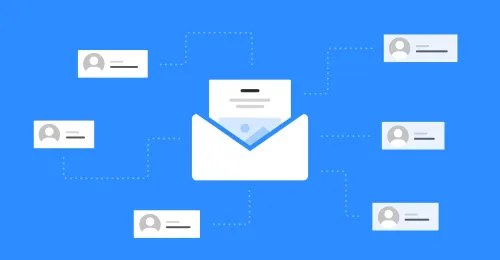Email is one of the most common forms of communication in the workplace and in our personal lives. However, it's easy to make mistakes when sending emails that can damage your reputation, cause misunderstandings, and even lead to lost opportunities. In this article, we'll discuss the most common email mistakes and how to avoid them to improve your communication and professionalism.
1. Not Proofreading Your Emails

One of the most common email mistakes is not proofreading your emails before sending them. This can lead to embarrassing typos, grammatical errors, and even factual mistakes that can damage your credibility. To avoid this mistake, take the time to read your emails carefully before hitting the send button. You can also use tools like Grammarly or Hemingway to check your writing for errors.
2. Using Poor Grammar and Spelling
Using poor grammar and spelling in your emails can make you appear unprofessional and careless. It's important to use proper grammar and spelling to convey your message clearly and effectively. If you're not confident in your writing skills, consider taking a writing course or using online resources to improve your grammar and spelling.
3. Sending Emails to the Wrong Person
Sending emails to the wrong person can be a major mistake that can lead to misunderstandings and even legal issues. To avoid this mistake, double-check the recipient's email address before sending your email. You can also use the BCC (blind carbon copy) feature to avoid accidentally sending emails to the wrong person.
4. Using an Unprofessional Email Address
Using an unprofessional email address can make you appear unprofessional and can even lead to your emails being ignored or deleted. To avoid this mistake, use a professional email address that includes your name or your company's name. Avoid using email addresses that include nicknames, numbers, or inappropriate words.
5. Writing Long and Confusing Emails

Writing long and confusing emails can make it difficult for the recipient to understand your message and can even lead to misunderstandings. To avoid this mistake, keep your emails short and to the point. Use bullet points or numbered lists to break up your message and make it easier to read.
6. Using Emojis and Abbreviations
Using emojis and abbreviations in your emails can be unprofessional and can even lead to misunderstandings. To avoid this mistake, use proper language and avoid using emojis or abbreviations unless they are commonly used in your industry or by your colleagues.
7. Not Responding to Emails in a Timely Manner
Not responding to emails in a timely manner can make you appear unprofessional and can even lead to lost opportunities. To avoid this mistake, make it a priority to respond to emails within 24-48 hours. If you need more time to respond, send a quick email to let the recipient know that you received their message and will respond as soon as possible.
8. Using a Vague or Inappropriate Subject Line
Using a vague or inappropriate subject line can make it difficult for the recipient to understand the purpose of your email and can even lead to your email being ignored or deleted. To avoid this mistake, use a clear and concise subject line that accurately reflects the content of your email.
9. Sending Emails When You're Emotional
Sending emails when you're emotional can lead to regrettable mistakes and can even damage your relationships with colleagues or clients. To avoid this mistake, take a break and wait until you're calm and collected before sending any emails. If you're still upset, consider talking to the recipient in person or over the phone instead.
10. Forgetting to Attach Files or Links

Forgetting to attach files or links can be a major mistake that can lead to lost opportunities or misunderstandings. To avoid this mistake, double-check that you've attached all necessary files or links before sending your email. You can also use tools like Boomerang or FollowUpThen to remind you to follow up on emails that require attachments or links.
Conclusion
Email is a powerful tool for communication, but it's important to use it wisely and avoid common mistakes that can damage your reputation and professionalism. By following these tips, you can improve your email communication and build stronger relationships with your colleagues, clients, and customers.
Frequently Asked Questions
What are the most common email mistakes?
The most common email mistakes include not proofreading your emails, using poor grammar and spelling, sending emails to the wrong person, using an unprofessional email address, writing long and confusing emails, using emojis and abbreviations, not responding to emails in a timely manner, using a vague or inappropriate subject line, sending emails when you're emotional, and forgetting to attach files or links.
How can I avoid making email mistakes?
To avoid making email mistakes, take the time to proofread your emails, use proper grammar and spelling, double-check the recipient's email address, use a professional email address, keep your emails short and to the point, use proper language, respond to emails in a timely manner, use a clear and concise subject line, wait until you're calm and collected before sending emails, and double-check that you've attached all necessary files or links.
What should I do if I make an email mistake?
If you make an email mistake, apologize to the recipient and take steps to correct the mistake. If the mistake is minor, you can simply send a follow-up email to clarify your message. If the mistake is more serious, you may need to have a conversation with the recipient in person or over the phone to resolve the issue."



